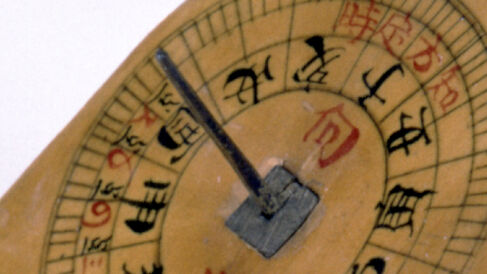Copycat Sundials?

When Britain sent a diplomatic embassy to China in 1793 to negotiate trade terms with the Qianlong Emperor, they were shocked when their scientific gifts were derided as unoriginal and childish.
An opportunity to see some treasures from the Whipple Library rare book collection, featuring some of the earliest Western Scientific books, works by Darwin, Galileo, Newton and more, and (possibly) the smallest scientific book ever printed… This is a free event but tickets are limited, book your ticket at https://www.eventbrite.com/e/500-years-of-science-in-print-tickets-825067147047
An opportunity to see some treasures from the Whipple Library rare book collection, featuring some of the earliest Western Scientific books, works by Darwin, Galileo, Newton and more, and (possibly) the smallest scientific book ever printed… This is a free event but tickets are limited, book your ticket at https://www.eventbrite.com/e/500-years-of-science-in-print-tickets-825072844087
An opportunity to see some treasures from the Whipple Library rare book collection, featuring some of the earliest Western Scientific books, works by Darwin, Galileo, Newton and more, and (possibly) the smallest scientific book ever printed… This is a free event but tickets are limited, book your ticket at https://www.eventbrite.com/e/500-years-of-science-in-print-tickets-825080206107
John Barrow, a member of the British mission, blamed its failure on the inability of Qing courtiers to understand the ingenuity of British instruments. He praised the “imitative powers” of the Chinese, but concluded that their “labour does not always appear to be bestowed with judgment.”
Ingenuity or imitation?
The four sundials shown in Images 1–4 question this contrast between Western ingenuity and Eastern imitation. Together, they demonstrate intriguing similarities in design between European and Chinese makers. But who copied whom?
Here we see what Barrow would expect: a form of Chinese diptych sundial (Image 1) that follows the design of European examples (Image 2) introduced to China by Jesuit missionaries.
But here we have evidence suggesting the reverse exchange.
Equinoctial dials like this type (Image 3, on the left), where the dial plate is adjusted for location by changing its incline angle, only appear in Europe in the late 16th century, whereas Chinese examples (Image 4, below) are known from an earlier date.
Did Western makers copy this design from Chinese dials brought to Europe?
Joshua Nall
Joshua Nall, ‘Copycat sundials?’, Explore Whipple Collections, Whipple Museum of the History of Science, University of Cambridge, 2020.
